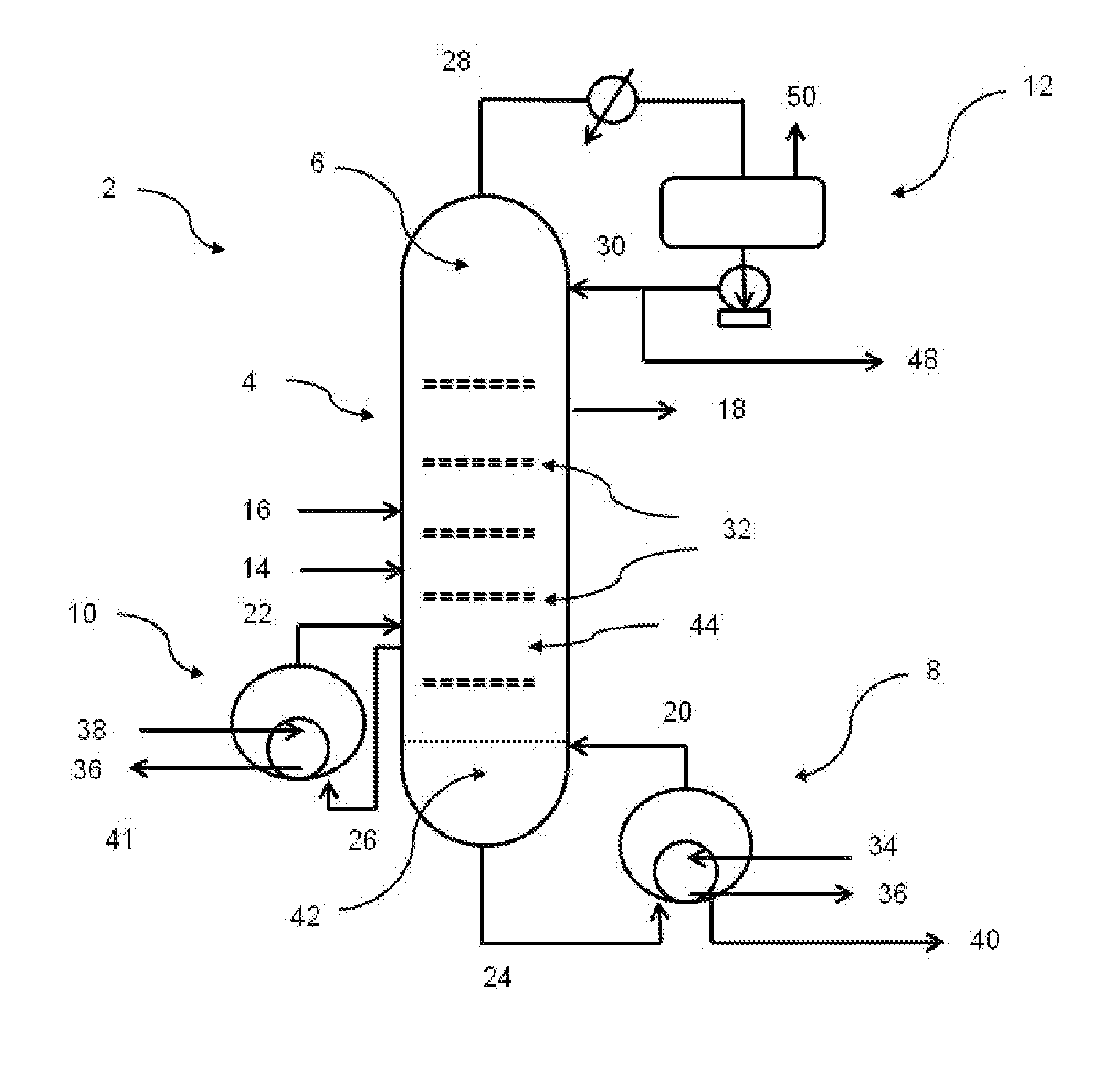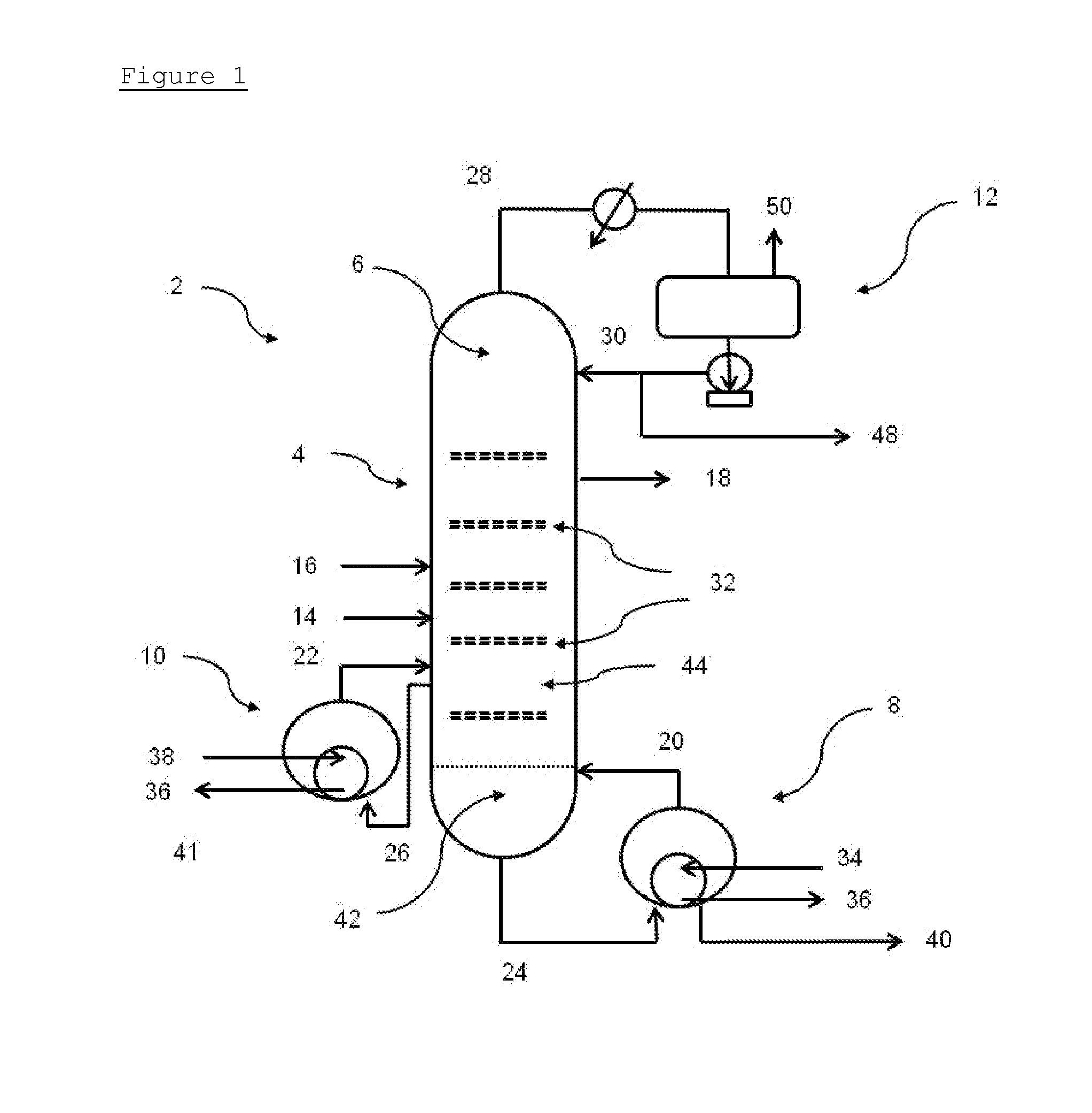Relating to propylene oxide purification
- Summary
- Abstract
- Description
- Claims
- Application Information
AI Technical Summary
Benefits of technology
Problems solved by technology
Method used
Image
Examples
Example
[0083]In order that the invention may be more readily understood, reference will now be made, by way of example, to the accompanying FIG. 1 showing a schematic view of a distillation column in accordance with one embodiment of the invention.
[0084]With reference to FIG. 1, a distillation system 2 for separating impurities from impure PO comprises a column structure 4 of walls and internals defining a distillation zone 6, a bottoms reboiler 8, an intermediate reboiler 10, and a reflux system 12.
[0085]The structure 4 of the system 2 defines an impure PO inlet 14 and an extractive distillation solvent inlet 16 into the distillation zone 6, and a purified PO outlet 18 from the distillation zone 6. Also defined are inlets 20, 22 and outlets 24, 26 for the bottoms reboiler 8 and the intermediate reboiler 10, as well as an overhead outlet 28 and a reflux inlet 30. From bottom to top of the column 2, the outlet 24 to the bottoms reboiler 8 is lowermost, followed by the inlet 20 from the bott...
PUM
 Login to View More
Login to View More Abstract
Description
Claims
Application Information
 Login to View More
Login to View More - R&D
- Intellectual Property
- Life Sciences
- Materials
- Tech Scout
- Unparalleled Data Quality
- Higher Quality Content
- 60% Fewer Hallucinations
Browse by: Latest US Patents, China's latest patents, Technical Efficacy Thesaurus, Application Domain, Technology Topic, Popular Technical Reports.
© 2025 PatSnap. All rights reserved.Legal|Privacy policy|Modern Slavery Act Transparency Statement|Sitemap|About US| Contact US: help@patsnap.com


